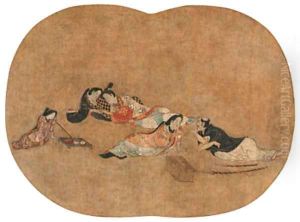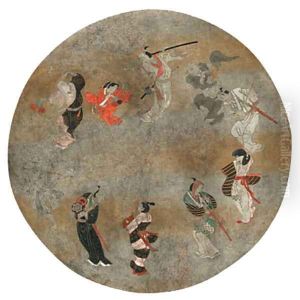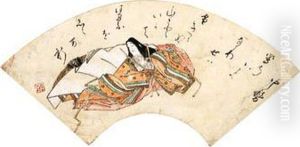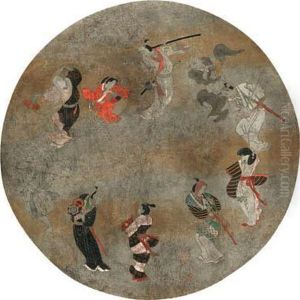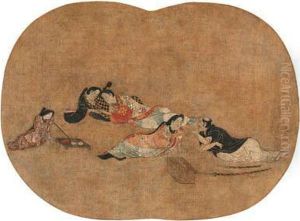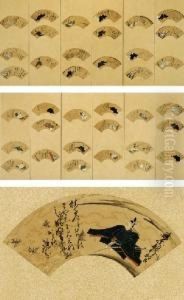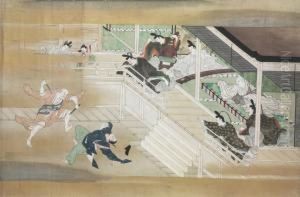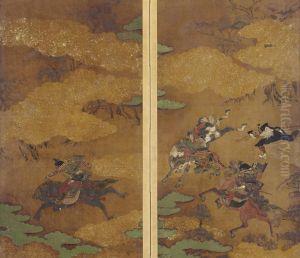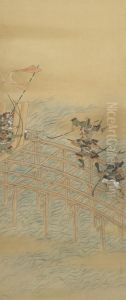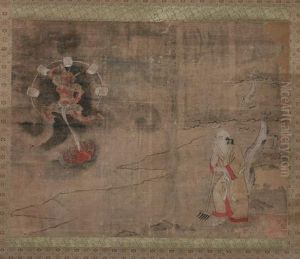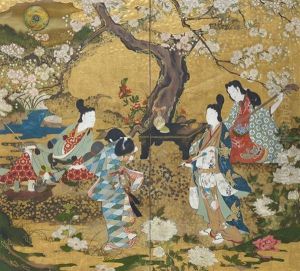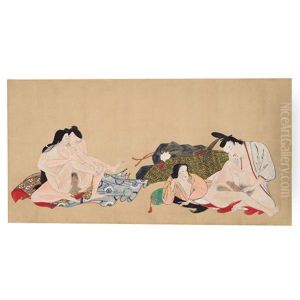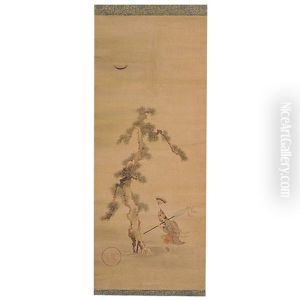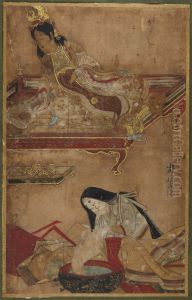Iwasa Matabei Paintings
Iwasa Matabei, often regarded as the founder of the Ukiyo-e genre of Japanese art, was a distinguished painter of the early Edo period. Born in 1578 in the province of Higo, Matabei was the son of a samurai. His life was marked by the turbulent times of the Sengoku period, which heavily influenced his artistic career. He is sometimes referred to as Iwasa Katsumochi, and there is much lore surrounding his life, blending fact with fiction. Matabei's style is characterized by its unique blend of the classical Yamato-e technique with the burgeoning trends of Ukiyo-e, which depicted the 'floating world' of pleasure districts and theater scenes of Edo (modern-day Tokyo). His works are distinguished by their elaborate detail, vibrant colors, and dynamic compositions. He was particularly known for his paintings of beautiful women (Bijin-ga) and historical narratives. Despite being celebrated as the 'father' of Ukiyo-e, Matabei's connection to this genre is a subject of scholarly debate. Some argue that his work represents a transitional phase, bridging the more traditional Japanese painting styles with the popular and commercial art that Ukiyo-e would become known for. Matabei's influence is seen in the works of later Ukiyo-e masters, although he himself remained somewhat apart from the commercial aspects of the genre, focusing instead on works commissioned by the samurai class and wealthy patrons. Matabei's later years were spent in Kyoto, where he continued to paint and influence the art world until his death in 1650. His legacy is a testament to the evolving nature of Japanese art, capturing a moment of significant transition and laying the groundwork for future generations of artists. Though not as widely recognized internationally as later Ukiyo-e artists like Hokusai or Hiroshige, Matabei's contributions to Japanese art history are nonetheless crucial for understanding the development of this uniquely Japanese form of expression.
